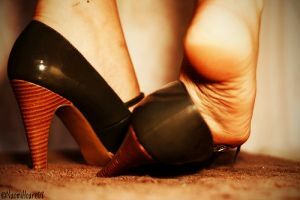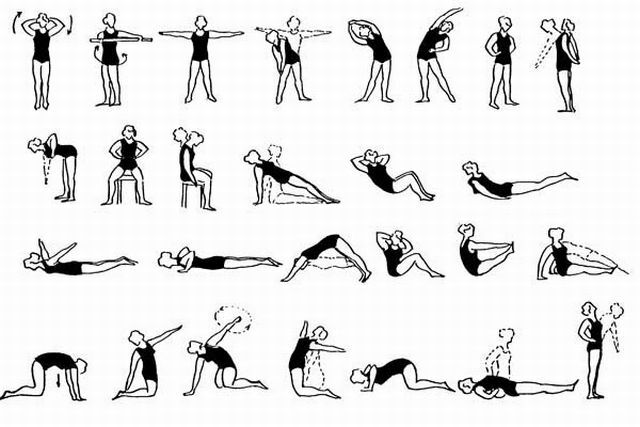 Gluteal muscles play an important role in various movements of the lower limbs of a person, including walking, running, squats and so on.
Gluteal muscles play an important role in various movements of the lower limbs of a person, including walking, running, squats and so on.
There are large, medium and small gluteal muscles, each of which has a specific function.
Contents of the article
- Anatomical features
- Pain in the buttock - this is serious!
- Osteochondrosis - painful pathology
- Intervertebral hernia
- Sciatica
- Pathology of development of the musculoskeletal system
- With arthrosis pains sharp and burning
- Malignant neoplasms
- It is necessary to know and understand
Anatomical features of
The most massive and large is the gluteus maximus muscle, whichforms the relief and convexity of this part of the body. It is a quadriceps thick muscle that connects the spine and pelvis, with the back of the upper third of the hip bone.
To the functions of a large muscle include:
- flexion and extension of the thigh;
- turn the hip to the outside;
- hip to the side and bring to the center.
The next largest gluteus muscle is the triceps muscles, most of which are directly under the gluteus majorus. Being well-designed, this muscle provides a beautiful lateral line of thighs.
The middle muscle is responsible for:
- leading the leg to the side;
- turn the thigh in / out;
- stabilizes the body and legs when moving - for example, when walking.
The smallest muscle of the buttocks, located directly under the middle muscle, is the smallest. These are flat three-headed muscles that take part in such movements as:
- tapping the legs to the side;
- turning the thigh in / out;
- holding the trunk vertically.

Pain in the buttock - this is serious!
If the pain in the buttocks gives in the foot is a serious enough symptom that may indicate serious illness or pathology.
If you have any unpleasant sensations in this area, no matter how hard they are and how long, you should consult your doctor.
Aching and severe pain in the buttocks giving up in the leg can be a symptom or consequence of such diseases as:
- osteochondrosis;
- intervertebral hernia;
- radiculitis;
- pathology of the development of the musculoskeletal system;
- arthrosis;
- circulatory disorders in the hip joint;
- malignant tumor.
Typically, patients complain of pain in the left or left buttock from the hip and down along the leg, in the middle of the buttocks, sharp and aching, aggravated by physical exertion.
Pain in the buttocks, giving up in the leg, usually occurs in the lumbar region and spreads below.
This may be a manifestation of osteochondrosis, radiculitis, curvature of the spine, hernia and rupture of the fibrous ring. 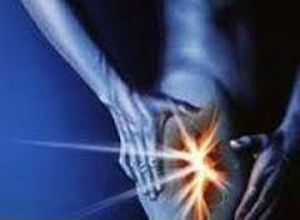
The same sensations, but on the left side can have a completely different nature, for example, hypothermia or trauma.
Unpleasant sensations between the buttocks are usually caused by disorders from the rectum, coccyx and pelvic organs.
Such pain may be a consequence of trauma, pathologies of the bones of this part of the spine or pelvic organs( uterus, epididymis, bladder).
Often, the nature of pain giving up in the leg can serve as neurological abnormalities, stress and a restless psychological background.
By intensity, you can distinguish a constant aching, sharp( lumbago), amplified by sudden movements and a sagging pain.
Diagnosis of each patient is necessary to accurately determine the etymology of the disease, as the symptoms often overlap.
Osteochondrosis - a painful pathology
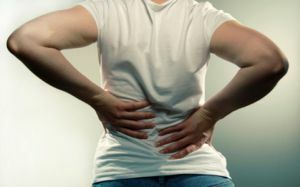 Recently, more and more young people suffer from osteochondrosis, which is affected by a large number of factors - here is the ecology, and the need to spend a lot of time in a sitting position and so on.
Recently, more and more young people suffer from osteochondrosis, which is affected by a large number of factors - here is the ecology, and the need to spend a lot of time in a sitting position and so on.
This kind of pain usually has a constant aching character and is aggravated by physical activity and sudden movements. This is accompanied by other symptoms - pain in the lower back, increased muscle tone of the buttocks, decreased sensitivity in the lower limbs, weakness of the calf muscles and others.
Treatment of osteochondrosis is performed by a neurologist on the basis of patient complaints and necessary studies( X-ray, tomography).Anti-inflammatory preparations of a wide spectrum of action, massage, physiotherapy are prescribed.
Intervertebral hernia
Acute severe pain from the back through the buttocks, moving in the leg is noted with herniated intervertebral discs. The side where the sensations are the strongest, depends on which side of the vertebral nerve is affected.
The main symptom is accompanied by such as a violation of skin sensitivity, unpleasant tingling or numbness of the extremities. In a more severe form, when the nerves are clamped, there may be disorders of the pelvic organs, a delay in urination, and problems with defecation.
Intervertebral hernia is treated by an orthopedist or neurologist with patient complaints, general diagnosis and special studies( MRI, X-ray, tomography).Surgical treatment can also be prescribed for severe disease.
Lumbosacral sciatica
This disease is generalized as a manifestation of pain associated with irritation of the nerve roots of the spinal cord.
Osteochondrosis and vertebral hernia can also be classified as radiculitis, whose bright representatives are acute pain in the spine, lower back, buttocks and leg.
To conclude that this radiculitis can be for three general symptoms:
- pain sensations described above;

- presence of motor disorders - decreased muscle strength, weakness in the legs;
- deterioration of the sensitivity of the skin - numbness of the fingers, tingling in the limbs and so on.
By itself, radiculitis is not a clinical diagnosis, but a consequence of a disease that a qualified specialist should identify and prescribe appropriate treatment. Painful sensations are removed with anti-inflammatory and analgesic drugs.
Pathology of the development of the musculoskeletal system
Parts of the human skeleton form a single connected system. Deviations from the norm in one place will necessarily affect the other parts of the system. As a result, improperly distributed muscle tone will lead to nerve transmission and pain in the buttocks and other parts of the body.
Most of all, suffer changes in the lumbar column, which are fraught with pain in the buttocks with spreading down the left, right leg, or immediately from both sides.
One of the common pathologies is flatfoot, which brings with it a change in the entire structure of the lower extremity belt.
So, the load on the foot is incorrectly distributed, the posture and the pelvic position are disturbed, which sooner or later leads to a pain syndrome in the lumbar region, buttocks and lower extremities.
Arthrosis pains sharp and burning
Arthrosis is a serious disease, accompanied by degeneration of the articular tissues and disruption of their functions. This process is accompanied by such sensations as pain in the joint, buttock, leg, groin.
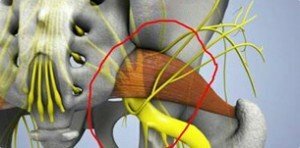 The first stage of arthrosis is expressed by the appearance of pain in the sciatic region during exercise or long walking, it is noisy.
The first stage of arthrosis is expressed by the appearance of pain in the sciatic region during exercise or long walking, it is noisy.
The second stage is characterized by stronger unpleasant sensations giving off to the groin and thigh.
The third stage is accompanied by constant suffering of the patient. Treatment and diagnosis is performed by a neurologist or orthopedic physician.
Disturbance of blood circulation in the hip joint
In this case, we can talk about two options:
- Prolonged compression of the vessels that supply the muscles of the buttocks .This can be caused by prolonged sitting while sitting, for example, at long-distance moving or sitting office work. The pain arises in the buttock and gives to the lower limb, there is numbness, tingling and so on. To get rid of unpleasant sensations it is possible simply having risen on legs, having given thereby an opportunity to be restored to circulation.
- Disorders of blood flow in the iliac artery , which feed the lower extremities. This is a dangerous and serious symptom, which can be a consequence of diseases such as thrombosis, atherosclerosis, malignant formations.
Symptoms of this case include: weakness in the legs, a violation of the sensitivity of the skin, numbness, tingling, the appearance of lameness, gait disturbance. It is rather difficult to diagnose the pathology of the vessels and it is necessary to perform a radiography of the iliac arteries with the introduction of a contrast agent.
Malignant neoplasms
Drawing and stitching pains in the buttocks with spreading to one or both legs may also indicate the presence of tumors.
So, the lymphosarcoma affects the skeleton of the pelvis and is expressed by the growing pain in the buttocks and legs;cancer of the blood( myeloma), osteoma - affects the bones and pelvic including. Expanding metastases can also lead to the above symptoms.
It is worth knowing and understanding
It should be noted that the pain in the gluteus muscles is most often due to the squeezing of nerves and nerve roots. 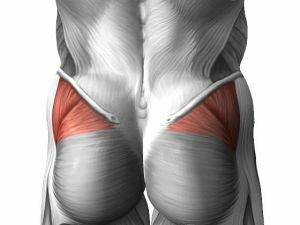
The muscles of the buttocks are the most massive nerve of the human body, called the sciatic nerve.
It is he and his processes that are responsible for the innervation of the lower limbs of a person. Pain sensations that a person experiences are a reaction of nerve endings to changes that have occurred as a result of edema of muscle tissue, mixing of vertebrae and so on.
Reducing inflammation will alleviate the condition of the patient, and a purposeful comprehensive treatment of the cause of pain will help to avoid the return of unpleasant symptoms.


